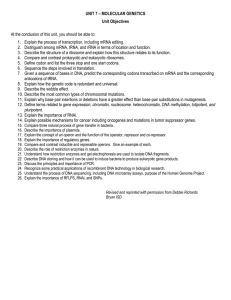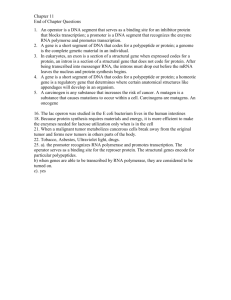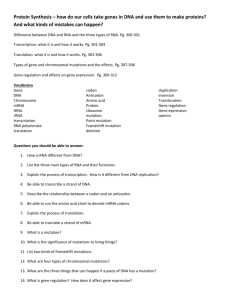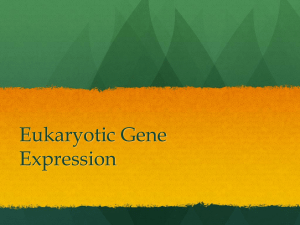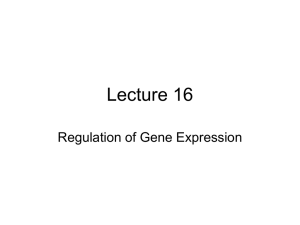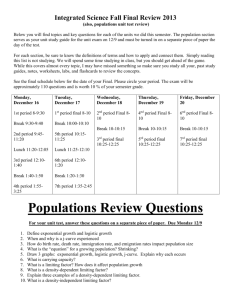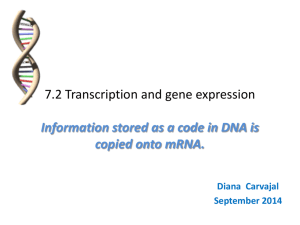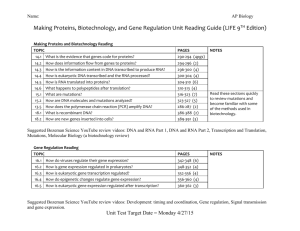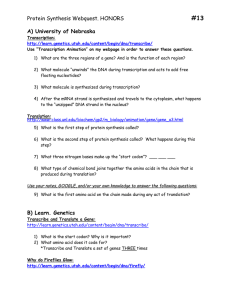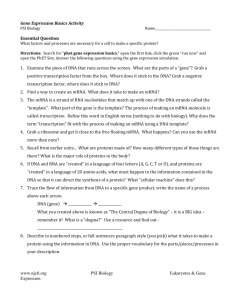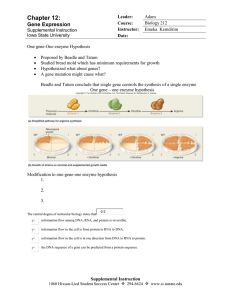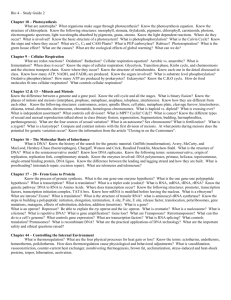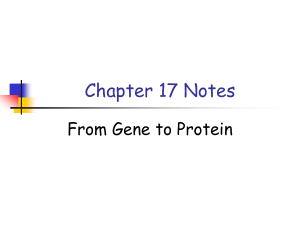Unit 7 Agenda
advertisement
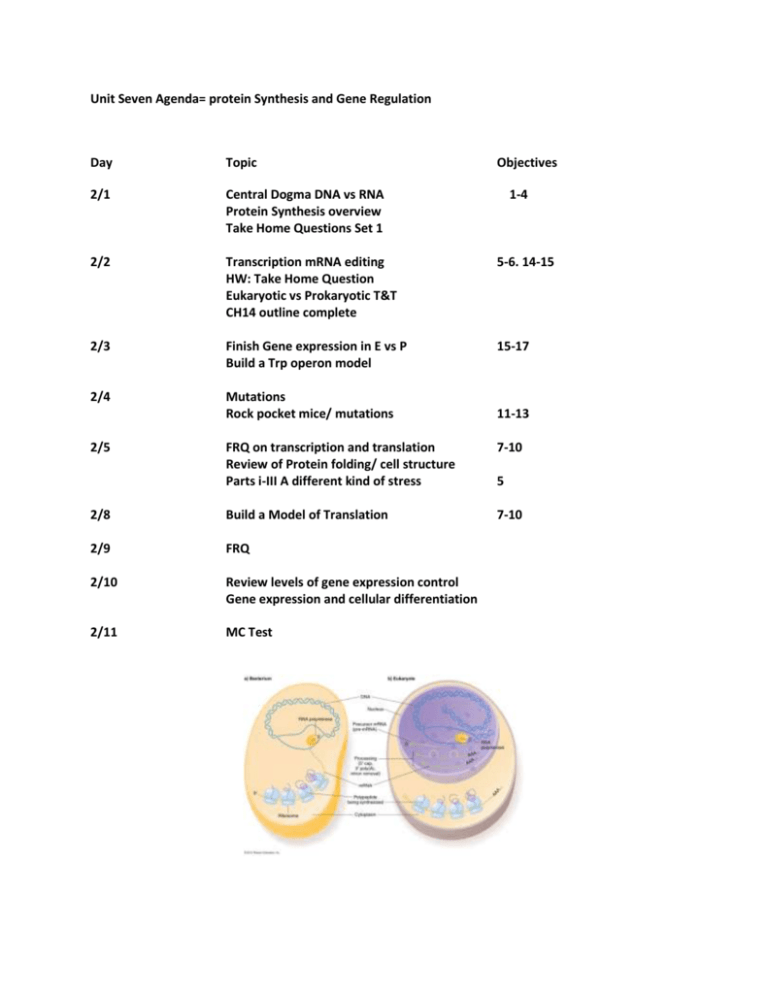
Unit Seven Agenda= protein Synthesis and Gene Regulation Day Topic 2/1 Central Dogma DNA vs RNA Protein Synthesis overview Take Home Questions Set 1 2/2 Transcription mRNA editing HW: Take Home Question Eukaryotic vs Prokaryotic T&T CH14 outline complete 5-6. 14-15 2/3 Finish Gene expression in E vs P Build a Trp operon model 15-17 2/4 Mutations Rock pocket mice/ mutations 2/5 Objectives 1-4 11-13 FRQ on transcription and translation Review of Protein folding/ cell structure Parts i-III A different kind of stress 7-10 2/8 Build a Model of Translation 7-10 2/9 FRQ 2/10 Review levels of gene expression control Gene expression and cellular differentiation 2/11 MC Test 5 Unit Seven Agenda= protein Synthesis and Gene Regulation 1. Explain the roles of DNA and RNA in the “Central Dogma” 2. Compare and contrast the structures of DNA and RNA. 3. Distinguish among mRNA, tRNA, rRNA and siRNA in terms of cellular location structure and function. 4. Describe the structure of the ribosome and explain the role of the ribosome in translation 5. Describe the role of cellular organelles in protein folding and maturation 6. Explain the process of transcription in DETYAIL including the role od RNA polymerase 7. Describe how the mRNA transcript is edited using the excision of introns as an example. (including an understanding of the structure and function of the spliceosome) 8. Explain the transcription process in DETAIL including the events of initiation elongation and termination. 9. Define codon list the 3 stop and 1 start codons the corresponding anticodon on tRNA and the amino acid sequence that would be produced. 10. Given a sequence of bases in DNA, predict the corresponding codons transcribed on mRNA 11. Explain how the genetic code is redundant and universal 12. Explain how errors in replication can lead to changes in the phenotypes of an organism and describe mechanisms used to repair these errors 13. Explain why base-pair insertions and deletions have a greater effect than base-pair substitutions in mutagenesis and describe what is meant by a frameshift mutation. 14. Explain how it is possible for some mutations in DNA to have no effect on the protein produced and/or phenotype of the organism 15. Distinguish between regulatory genes and structural genes 16. Describe how transcription factors work together with regulatory sequences of DNA (including promoters and enhancers) to activate or repress initiation of transcription in a eukaryotic cell. 17. Describe the connection between the regulation of gene expression and observed differences between individuals in a population. 18. Explain how the regulation of gene expression is essential for the processes and structures that support efficient cell function. 19. Explain how signal pathways mediate gene expression, including how this process can affect protein production through the example of cell cycle regulation.

